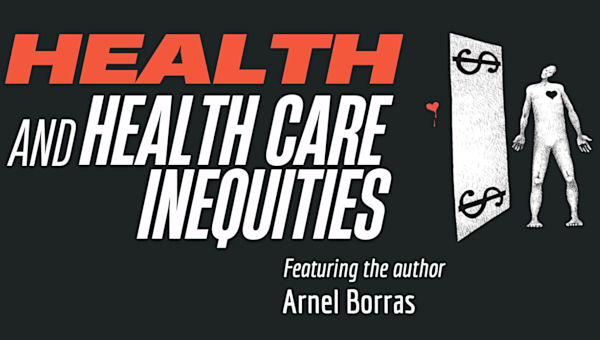Hospital Overload: Ford Government Begins Its Assault on Ontario Hospitals
The advisor on healthcare to the Ontario Conservative Government of Doug Ford, Rueben Devlin, released his report on January 31 with the headline that “more hospital beds will not solve hallway medicine,” subtly twisting – and contradicting – the Ford government’s election pledge. The Ontario Health Coalition immediately called the report out. Mr. Devlin, it should be noted, has a long history of driving cuts in the health sector and neoliberalizing delivery. He is the former CEO of Humber River Regional Hospital in Toronto, where, under his leadership, three entire hospitals were closed and replaced with one privatized P3 hospital that had too few beds to serve its catchment population.
 The former Liberal government re-opened mothballed hospital sites to deal with the overcrowding and lack of capacity at Humber River and other regional hospitals. Devlin was also the President of the Ontario Conservative Party during the Mike Harris years in which Ontario’s hospitals suffered massive restructuring. In order to cut $800-million, the Harris government spent $3.9-billion in restructuring costs, according to the Provincial Auditor. Local governance and democratic hospital boards were eliminated from dozens of communities, reams of hospitals were closed, and, ultimately, the restructuring led to the devastation of services in many medium and smaller hospitals.
The former Liberal government re-opened mothballed hospital sites to deal with the overcrowding and lack of capacity at Humber River and other regional hospitals. Devlin was also the President of the Ontario Conservative Party during the Mike Harris years in which Ontario’s hospitals suffered massive restructuring. In order to cut $800-million, the Harris government spent $3.9-billion in restructuring costs, according to the Provincial Auditor. Local governance and democratic hospital boards were eliminated from dozens of communities, reams of hospitals were closed, and, ultimately, the restructuring led to the devastation of services in many medium and smaller hospitals.
The Ontario Health Coalition regularly reports on Ontario’s standing in terms of hospital funding and measures of capacity and outcomes with the rest of Canada and many other countries. They report that:
- Ontario has the fewest hospital beds of any province in Canada, with 1 fewer bed for every 1,000 people compared to the average of other provinces (aggregate total shortfall is 14,000+ fewer beds than the average of the rest of the provinces);
- Ontario has the highest rate of hospital readmissions in Canada. Just over 1 in every 9 patients discharged end up readmitted to hospital within 30 days, pointing to too-early discharges;
- Ontario has the lowest hospital nursing hours per patient of any province in Canada and the gap is growing each year; and
- Ontario has fewer hospital beds per person than all of our peer countries and ranks third from the bottom of all OECD nations.
Ontario’s Hospital Bed Shortage
Warnings about hospital overcrowding have been repeatedly provided to Ontario’s government. The following backgrounder contains recent reports and warnings about the problem from Ontario’s Auditor General, Health Quality Ontario, and the Canadian Association of Emergency Physicians. It also contains data from the Canadian Institute for Health Information comparing hospital bed capacity across Canada and the OECD, comparative hospital nurse staffing levels and public hospital funding. The evidence is irrefutable. Ontario has cut more hospital beds and staff than any virtually all peer jurisdictions. Ontario has dropped to the bottom of the country in public hospital funding. The resulting hospital bed shortage and serious overcrowding situation compromises patient and staff safety. Ontario’s government must urgently reopen hospital beds and restore capacity to safe levels.
The Coalition called on the Ontario government to take responsibility for planning for hospital services in our province, as is required under the Canada Health Act, including:
- Recognize that the emergency department crisis reported by hospital executives is a symptom of a systemic shortage of hospital beds that must be urgently rectified.
- Fund public hospitals to meet evidence-based measures of population need and ensuring that the funding goes to care.
- Reduce Ontario’s hospital overcrowding to meet the 85% occupancy benchmark that is the internationally-accepted indicator for the safe level of crowding.
- Commit to ensuring that no patient will be left on a stretcher in a hallway or public area overnight or for days waiting for a hospital bed.
Myth-buster:
- A number of hospitals have created secondary waiting areas so that they can report that patients are moved out of emergency departments within target wait times. But patients are simply moved to areas with different names to continue waiting. Ontario’s government must take steps to ensure that reporting is honest and captures the true extent of the problem.
- Government and hospital spokespeople routinely mischaracterize Alternate Level of Care (ALC) patients as the cause of hospital backlogs. In fact, according to the Ontario Hospital Association’s June 30, 2016 update, approx. 2,700 of ALC patients are in acute care beds. Of these patients, one-third are waiting to be transferred to another type of hospital bed (palliative, complex continuing care, convalescent care, mental health, rehabilitation); one-third are waiting for a long-term care bed; ten percent are unknown; and the rest are waiting to be discharged to various types of home or community care. To characterize ALC patients as though they are inappropriately in hospital is erroneous. This information is being mischaracterized to cover up the shortage of hospital beds. (See the OHA’s ALC survey results for June 30, 2016.)
- Misuse of emergency departments by patients is not the cause of hospital overcrowding. People who are frightened and sick should be able to go to their local hospital for help. Patients lying on stretchers waiting for admission to hospital beds are, without question, acutely ill and are not malingering. Patients that are not acutely ill are not admitted to hospitals. (See myth buster from the Canadian Institute for Health Research.)
Findings of Ontario’s Auditor General
Ontario’s Auditor General describes the situation in Ontario’s large community hospitals in her most recent report, released on November 30. Her findings support the evidence that the Ontario Health Coalition has brought to the government repeatedly in recent years. Among the Auditor General’s findings: (Page references for the 2016 Ontario Auditor General’s Report are included here.)
- The audit team describes a state of severe overcrowding in the hospitals they visited. Patients are waiting on stretchers or gurneys in hallways and other public areas, sometimes for days (page 446).
- Bed occupancy rates of greater than 85 per cent are unsafe and contribute to infections (beds are too crowded and turn over is too fast). During 2015, 60 per cent of all medicine wards in Ontario’s large community hospitals have occupancy rates of greater than 85 per cent (page 431).
- The Canadian Institute for Health Information reports that Ontario hospital patients have the 2nd highest rate of potentially fatal sepsis infections in Canada (page 431).
The Auditor General describes the consequences of chronic underfunding and the failure to plan to meet population need for care:
- 1 in 10 patients requiring admission to hospital are waiting too long in emergency departments. The provincial government’s target is 8 hours from triage (90 per cent of patients are supposed to be transferred to a bed withing 8 hours). But in the hospitals the audit team visited it took 23 hours for 90 per cent of the patients to be transferred to the ICU and 37 hours for transfers to other acute care wards (page 429).
- The audit team described a situation across Ontario’s large community hospitals in which there are frequent
and planned operating room closures. 45 per cent of large hospitals have one or more O/R closed due to funding constraints (page 450). - There has been no improvement in wait lists for elective surgeries for the 5 years leading into this audit (pages 430-431).
- 58 per cent of hospitals ran out of money for some types of surgeries and had to defer them to the next fiscal year (page 444).
- Patients with traumatic brain injury and acute appendicitis are waiting 20 hours or more for emergency surgery (page 430).
- Wait time targets are not being met for the following types of surgeries: neurosurgery, oral and dental, thoracic, vascular, orthopedic, gynecologic, ophthalmic, cancer (page 451).
Warning from the Ontario Health Quality Council
Even Health Quality Ontario, though it studiously continues to refuse to mention Ontario’s shortage of hospital beds, regardless of the evidence, included a warning about how close the system is to critical in its November 2016 report on emergency departments:
“Patients are already lying in hallways and being seen by doctors in waiting rooms. Under current conditions, the ability of Ontario’s emergency departments to care properly for patients could be seriously compromised by an occurrence as predictable as a bad flu season or as unpredictable as a SARS outbreak or a major weather event.” (page 3)
Position Paper from the Canadian Association of Emergency Physicians
The Canadian Association of Emergency Physicians has repeatedly warned about dangerous levels of emergency department overcrowding. Among the key causes they cite is the Canada-wide shortage of hospital beds, a situation that is more severe in Ontario than other provinces. Here is a description of the situation from their position paper on emergency department overcrowding:
“With the shortage of hospital beds and recurring issues with acute care capacity, hospitals increasingly face a situation where more patients require admission than there are beds to accommodate them. The current approach to dealing with Access Block due to hospital crowding involves delaying the outflow of admitted patients into appropriate inpatient areas; resulting in an excessive and unsafe use of EDs to inappropriately ‘warehouse’ admitted patients, both stable and unstable, for long periods of time. This ‘boarding’ of admitted patients within the ED results in EDOC and thus creates delays in seeing new patients presenting to the ED. Surveys have shown that patients attempt multiple other options prior to accessing the ED. Moreover, patients of lower acuity and urgency do not occupy acute care stretchers, require little nursing care, and typically have brief treatment times. The myth of ‘inappropriate use’ should be permanently dispelled, and administrators and politicians should be encouraged to avoid attributing EDOC to ambulatory patient ED health services access…. The lack of acute care beds in Canada means that most hospitals frequently operate at unsustainable occupancy rates of higher than 95%, a level at which regular bed shortages, periodic bed crises, and hospital overcrowding are inevitable. Functioning at capacities above 95% occupancy does not allow for flexibility in the system to accommodate the natural peaks in patient volumes and admissions that will periodically occur.” Affleck et al., CMAJ 2013, Pages 362-363.
By the Numbers: Comparative Data Shows Ontario Ranks at the Bottom in Key Indicators of Hospital Care Levels
Chart 1.
| Hospital Beds Per 1000 (population) By Province, 2013-14 |
|
|---|---|
| Newfoundland & Labrador | 4.6 |
| New Brunswick | 3.8 |
| Saskatchewan | 3.6 |
| Nova Scotia | 3.4 |
| Manitoba | 3.3 |
| PEI | 3.3 |
| British Columbia | 3.0 |
| Alberta | 2.8 |
| Ontario | 2.3 |
| Average other provinces | 3.5 |
Author’s calculations from: Canadian Institute for Health Information, Data Table: Hospital Beds Staffed and in Operation 2013-14. Population statistics from Canadian Institute for Health Information, National Health Expenditures Database 2015.
Chart 2.
| OECD Hospital Beds Per 1000 Population, 2013 |
|
|---|---|
| Japan | 13.3 |
| Korea | 11.0 |
| Germany | 8.3 |
| Austria | 7.7 |
| Hungary | 7.0 |
| Poland | 6.6 |
| Czech Republic | 6.5 |
| France | 6.3 |
| Belgium | 6.3 |
| Slovak Republic | 5.8 |
| Luxembourg | 5.1 |
| Estonia | 5.0 |
| Finland | 4.9 |
| Greece | 4.8 |
| Switzerland | 4.7 |
| Slovenia | 4.6 |
| Norway | 3.9 |
| Australia | 3.8 |
| Italy | 3.4 |
| Portugal | 3.4 |
| Iceland | 3.2 |
| Israel | 3.1 |
| Denmark | 3.1 |
| Spain | 3.0 |
| United States | 2.9 |
| Ireland | 2.8 |
| New Zealand | 2.8 |
| United Kingdom | 2.8 |
| Canada | 2.7 |
| Turkey | 2.7 |
| Sweden | 2.6 |
| Ontario | 2.3 |
| Chile | 2.2 |
| Mexico | 1.6 |
| OECD Average | 4.8 |
Source: OECD, Health Statistics 2015.
The evidence is indisputable that Ontario’s government has cut hospital care to the lowest levels of all provinces in Canada. As illustrated in Chart 1, Ontario has the fewest hospital beds left per capita of any province, and that number is declining. In 2008-09, Ontario had 2.5 hospital beds per 1000 population, according to Canadian Institute for Health Information (CIHI) data. Today that number has dropped to 2.3 hospital beds per 1000 population. The other provinces average 3.5 hospital beds per 1000 people. The difference of 1.2 beds per 1,000 population is vast. On an aggregate per capita basis Ontario now has 16,440 less hospital beds than the average. In fact, Ontario’s government has cut more than 18,000 hospital beds since 1990 and still the cuts are continuing.
Not only has Ontario cut more hospital beds than any other province in Canada, we also now rank at the bottom of international data on hospital beds per population. Compared to 33 countries of the OECD, Ontario is third last in hospital beds per capita, followed only by Mexico and Turkey.
As hospital beds continue to be cut and closed down, nurses, health professionals and support staff have also been cut dramatically. Ontario has dropped to the bottom of the country in nurse to patient ratios. Data from the Canadian Institute for Health Information shows that Ontario now has the least hours of nursing care per hospital patient. Yet nurse staffing levels continue to be cut.
Chart 3.
|
Source: Canadian Institute for Health Information, 2013. |
|||||
| Nursing Inpatient Services Total Worked Hours per Weighted Case |
|||||
|---|---|---|---|---|---|
| 2007-2008 | 2008-2009 | 2009-2010 | 2010-2011 | 2011-2012 | |
| NFLD | 52.20 | 53.26 | 54.48 | 55.90 | 52.90 |
| PEI | 83.48 | N/R | 62.19 | 62.46 | 61.66 |
| N. S. | 56.79 | 57.34 | U | U | 54.95 |
| N.B. | 54.98 | 55.46 | 56.26 | 57.29 | 58.13 |
| Quebec | 49.73 | 50.06 | 50.82 | 50.73 | 52.47 |
| Ontario | 44.98 | 44.76 | 43.71 | 42.81 | 42.88 |
| Manitoba | 54.41 | 54.27 | 53.87 | 53.06 | 53.97 |
| Saskatchewan | 49.37 | 51.42 | 51.28 | 52.95 | 54.18 |
| Alberta | 54.12 | 54.65 | 54.52 | 54.24 | 54.36 |
| B.C. | 44.24 | 45.27 | 45.03 | 45.87 | 46.27 |
| NWT | U | 83.05 | 88.51 | 69.48 | N/R |
| Yukon | 48.84 | 48.97 | 50.25 | 56.31 | 54.51 |
| Weighted Average | 48.59 | 48.80 | 48.36 | 48.20 | 48.98 |
Across Canada, patients receive 14.2 per cent more nursing care than do patients in Ontario’s hospitals. Chart 3 illustrates the growing gap between Ontario and the rest of Canada in nursing hours per patient (ie. per weighted case). In 2007 – 08 Ontario’s nurse staffing hours were 3.61 hours below the average of Canada per weighted case. By 2011-12, Ontario’s nurse staffing hours were 6.1 hours below the average of the country. That is a 69 per cent increase in the differential in just four years. As the hospital cuts have continued and escalated since 2011-12, we can expect that gap to be even wider when more recent data becomes available.
Nine Years of Real-Dollar Cuts Mean Ontario Has Dropped to the Bottom of the Country in Hospital Funding
The above data gives a statistical overview of some key indicators of hospital service levels in Ontario compared to other jurisdictions in Canada and internationally. The following section measures hospital funding compared to other provinces in Canada. As noted above, Ontario’s government has set global hospital operating funding increases below the rate of inflation for 9 consecutive years – the longest period of hospital cuts in our province’s history. Until this year, hospital global funding had been frozen for four years in a row. Today, by all measures, Ontario has dropped far below the other provinces in hospital funding.
Measured on a per capita basis, the most recent data from the Canadian Institute for Health Information National Health Expenditures Database shows that Ontario ranks second-last in hospital funding. For the last few years, Ontario and Quebec have traded places for lowest ranking in the country. We are significantly below the national average. In fact, Ontario’s government funds our public hospitals $501 less per person than the average of the other provinces.
Chart 4.
| Public Hospital Funding Per Person, 2015 Current $ |
|
|---|---|
| Newfoundland & Labrador | $2,406 |
| Alberta | $2,245 |
| Prince Edward Island | $1,995 |
| New Brunswick | $1,971 |
| Nova Scotia | $1,907 |
| Manitoba | $1,818 |
| British Columbia | $1,797 |
| Saskatchewan | $1,761 |
| Ontario | $1,419 |
| Quebec | $1,382 |
| Average of the other provinces | $1,920 |
| Difference between Ontario and the average of the other provinces | Ontario funds hospitals at $501 per person |
Source: Author’s calculations from CIHI, National Health Expenditures Database 2015
Chart 5.
| Public Hospital Funding as % of Provincial GDP 2015 |
|
|---|---|
| PEI | 4.73 % |
| New Brunswick | 4.45 % |
| Nova Scotia | 4.31 % |
| Newfoundland & Labrador | 3.82 % |
| Manitoba | 3.59 % |
| British Columbia | 3.35 % |
| Quebec | 2.97 % |
| Alberta | 2.67 % |
| Ontario | 2.64 % |
| Saskatchewan | 2.38 % |
| Average of the other provinces | 3.59 % |
Source: Author’s calculations from CIHI, National Health Expenditures Database 2015
Chart 6.
| Public Hospital Funding as % of All Provincial Program Funding 2014 |
|
|---|---|
| Nova Scotia | 20.72 % |
| British Columbia | 19.44 % |
| New Brunswick | 18.95 % |
| Alberta | 18.91 % |
| Newfoundland & Labrador | 18.61 % |
| Manitoba | 17.94 % |
| PEI | 17.56 % |
| Ontario | 15.34 % |
| Saskatchewan | 14.73 % |
| Quebec | 11.16 % |
| Average of other provinces | 17.56 % |
Source: Author’s calculations from CIHI, National Health Expenditures Database 2015.
Hospital spending per person is a clear comparison of how many resources our government is allocating to these services. To measure economic sustainability or affordability, GDP (which measures economic output) is used as the comparator. As measured as a percentage of provincial GDP, the results are the same. Ontario is second last in Canada, followed only by Saskatchewan which saw significant GDP growth in recent years. This measure shows that Ontario has room to improve hospital funding while keeping funding at sustainable levels, as long as funding goes to improving services.
Sustainability can also be measured in terms of expenditure as a proportion of the provincial budget. In Ontario, hospital funding as a share of the provincial budget has been declining for decades. The most recent data show that we are third last among Canadian provinces for hospital spending as a proportion of total program spending. Again, the data show that we are considerably lower than the average of the other provinces and there is room to improve hospital funding to stop the cuts and restore service levels to meet population need.
Hospital Overcrowding, Cuts and Early Discharges: Impact on Patients
Ontario has not conducted a hospital bed study to measure population need and assess how many hospital beds should be planned for more than twenty years. To the extent that data is being used in planning at all, the numbers that are being used are two decades out of date. Instead of using an evidence-based planning approach, Ontario’s health policy has centred on constraining hospital budgets, cutting services and reducing patient length of stay. As a result, Ontario is suffering from a shortage of hospital beds and services that is negatively affecting patients’ access to care and safety.
Ontario’s hospital occupancy levels are extraordinarily high. According to Ministry of Health data, by 2010 there were, on average, 30,164 inpatients in Ontario’s 30,810 hospital beds. The provincial hospital bed occupancy rate is 97.8%, much higher than other jurisdictions. By comparison, the OECD reports an average occupancy rate for acute care beds of 75%. In the United States, the average hospital occupancy rate is 68.2%.1 Most often cited in the academic literature, a target hospital occupancy rate to reduce access blockages and improve outcomes is 85%. The consequences of hospital overcrowding warrant public attention. Within hospitals, overcrowding is associated with serious quality of care issues. Overcrowded emergency departments do not have appropriate staffing ratios for critical care or intensive care patients who require intensive monitoring by specially trained staff. Across Europe, hospital occupancy rates have been cited as a determining factor in hospital-acquired infections (HAIs), and indeed Ontario has experienced repeated waves of Hospital Acquired Infection outbreaks. Cancelled surgeries and prolonged waits are associated with poorer health outcomes. Ontario’s extremely high occupancy poses a significant threat to patient safety and quality of care.
Its not the flu: it’s a chronic condition
Sampling of hospital bed occupancy rates (final quarter 2013)
- Napanee/Lennox/Addington: 123%
- Sault Ste Marie area: 114%
- Toronto Hosp. for Sick Kids: 110%
- Toronto Central: 110%
- London Health Sciences Centre: 108%
- Exeter South Huron: 106%
- Burlington Joseph Brant: 106%
- Hamilton Niagara Haldimand Brant: 106%
- Niagara Health System: 104%
- Windsor Hotel Dieu Grace: 101%
- Erie St. Clair: 101%
- Oakville Halton Health: 101%
- Mississauga Halton: 101%
- The Ottawa Hospital: 101%
- Barry’s Bay St Francis: 101%
- Thunder Bay Regional: 100%
- Newmarket Southlake Reg.: 100%
From Ministry of Health data accessed by Jonathan Sher, London Free Press. See: “Ont. health ministry data on hospital overcrowding riddled with errors.”
Emergency room overcrowding is epidemic among large and medium-sized community hospitals in Ontario, and a frequently noted factor in ER wait times is the unavailability of acute care beds.2 In 2011, Ontario had, on average 592 patients waiting in emergency departments for admission to an inpatient bed. This represents almost 4% of Ontario’s total acute care beds.3 A study by Ontario researchers has demonstrated that long waiting times increase the risk of death and hospital readmission for patients who have been discharged from the emergency department. This study, published in the British Medical Journal looked at 22 million patient visits to Ontario emergency departments over a five year period, and found that the risk of death and hospital readmission increased with the degree of overcrowding at the time the patient arrived in the emergency department. The authors estimate that if the average length of stay in the emergency department was an hour less, about 150 fewer Ontarians would die each year.4
Not only is there a problem getting into hospitals, there is also a serious issue of patients being discharged too early and without placement in home care and in long term care homes. The Advocacy Centre for the Elderly reports that they receive frequent complaints from patients who are subject to pressure tactics to move them out of hospitals.

Hospital policies may include statements that if person refuses to pick from short lists of long term care facilities that are not of their choosing, or if the patient refuses to take first available bed, then will be charged a large per diem ranging from $600 a day to $1800 a day.5 In many cases the charges levied against patients in an attempt to move them out of hospital are unlawful.
In addition to reduced hospital beds and shorter lengths of stay for hospital patients, entire departments have been systematically cut from local hospitals. Outpatient rehabilitation, social work, laboratories and an array of outpatient services have been slashed. In many cases this care is moved far away from patients’ home communities, privatized and subject to new user fees, or simply inaccessible.
Consequences of Emergency Department Overcrowding
- Patient suffering, dissatisfaction and inconvenience
- Poor patient outcomes
- Increased morbidity and mortality
- Poor quality of care
- Contribution to infectious disease outbreaks
- Violence aimed at hospital staff and physicians
- Decreased physician and nursing productivity
- Deteriorating levels of service
- Increased risk of medical error
- Negative work environments
- Negative effects on teaching and research
Source: Physician Hospital Care Committee Report to the Ministry of Health and Long-Term Care, Ontario Medical Associaiton and Ontario Hospital Association Tripartite Committee, Improving Access to Emergency Care: Addressing System Issues, August 2006. •
Download PDF version.
Endnotes
- National Center for Health Statistics, “Health, United States 2010”, 2011, page 354.
- See: Forster, A.J. et al “The Effect of Hospital Occupancy on Emergency Department Length of Stay and Patient Disposition” Academic Emergency Medicine, 2003; CIHI “Understanding Emergency Department Wait Times”; B.H.Rowe et al., “Frequency, Determinants, and Impact of Overcrowding in Emergency Departments in Canada” 2006; OHA, OMA, MOHLTC, “Improving Access to Emergency Care: Addressing System Issues” 2006.
- Ontario Hospital Association, “ALC Study”, June 2011.
- BMJ 2011; 342:d2983
- Wahl, Judith, Advocacy Centre for the Elderly. “ALC, Hospital Discharge, Long Term Care and Retirement Home – What Happened to the Law and Ethics?” Power Point presentation 2011.





